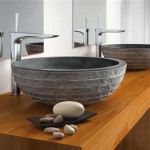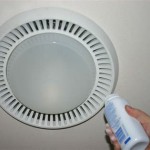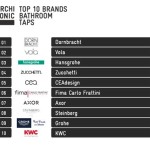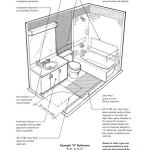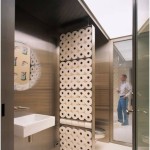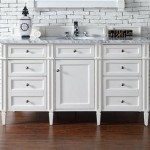BC Building Code Requirements for Bathroom Exhaust Fan Placement
The British Columbia Building Code (BCBC) sets out the regulations governing the construction and renovation of buildings within the province. A crucial aspect of this code pertains to ventilation, particularly in areas prone to moisture buildup, such as bathrooms. Proper bathroom exhaust fan placement is essential for maintaining indoor air quality, preventing mold growth, and protecting the structural integrity of the building. Understanding and adhering to the BCBC requirements for exhaust fan placement is paramount for builders, contractors, and homeowners alike.
The primary objective of bathroom ventilation is to remove excess moisture generated during activities like showering and bathing. This moisture, if left unchecked, can condense on surfaces, leading to the growth of mold and mildew. Mold not only poses a health risk to occupants, triggering allergies and respiratory problems, but also degrades building materials like drywall, wood, and paint. Furthermore, excessive moisture can damage insulation, reducing its effectiveness and increasing energy costs. The BCBC mandates specific ventilation requirements to mitigate these risks and ensure a healthy and durable building environment.
The BCBC relies heavily on the National Building Code of Canada (NBC) for its ventilation requirements, adapting them to the specific climatic and geographical conditions of British Columbia. While the NBC provides the general framework, the BCBC may include amendments or supplementary information to address unique regional challenges. Therefore, it is essential to consult the most recent version of the BCBC and any applicable local bylaws when planning bathroom ventilation systems.
Minimum Exhaust Rate Requirements
One of the fundamental aspects of the BCBC regarding bathroom ventilation is the requirement for a minimum exhaust rate. The code specifies the amount of air that an exhaust fan must be capable of removing from the bathroom within a given timeframe. This exhaust rate is typically expressed in cubic feet per minute (CFM). The required CFM is determined based on the size of the bathroom. The BCBC generally references the ASHRAE Standard 62.2, Ventilation and Acceptable Indoor Air Quality in Low-Rise Residential Buildings, as a guideline for determining appropriate ventilation rates. However, it is crucial to refer directly to the BCBC for the specific requirements in British Columbia.
Smaller bathrooms, often defined as those less than 50 square feet, typically require a minimum exhaust rate of 50 CFM. Larger bathrooms may require proportionately higher exhaust rates, calculated based on the square footage of the room. The calculation might involve a formula that multiplies the square footage by a specific factor to determine the required CFM. For example, a 100 square foot bathroom might require 100 CFM of exhaust capacity. The BCBC outlines the precise method for calculating the minimum required CFM, and it is important to adhere to the prescribed method to ensure compliance.
In addition to the CFM requirement based on square footage, the BCBC also addresses intermittent ventilation options. Intermittent ventilation refers to the use of an exhaust fan that is operated only when needed, rather than continuously. When using intermittent ventilation, the fan must be capable of achieving the required CFM. Furthermore, the BCBC may specify the control requirements for intermittent fans, such as requiring them to be connected to a timer or humidity sensor to ensure sufficient ventilation during and after showering or bathing. The timer should allow for a sufficient run time to remove residual moisture after use.
The BCBC also acknowledges the use of continuous ventilation systems. These systems provide a constant, albeit lower, rate of air exchange. Continuous ventilation systems typically employ a central ventilation unit that supplies fresh air to the building while simultaneously exhausting stale air. If using a continuous ventilation system, the BCBC specifies the minimum continuous exhaust rate for bathrooms, which is generally lower than the intermittent exhaust rate. However, continuous ventilation systems must still meet the overall ventilation requirements of the building as a whole.
Optimal Placement for Effective Moisture Removal
While meeting the minimum CFM requirements is essential, the placement of the exhaust fan within the bathroom also plays a crucial role in its effectiveness. The BCBC does not explicitly mandate a precise location for the exhaust fan, but it emphasizes the importance of placing the fan in a location that effectively captures and removes moisture-laden air. Generally, the optimal location is near the source of moisture, such as the shower or bathtub.
Placing the exhaust fan directly above the shower or bathtub is often considered the most effective method for capturing moisture before it has a chance to spread throughout the bathroom. When installing the fan in this location, it is crucial to ensure that the fan is rated for use in wet locations and is properly grounded to prevent electrical hazards. The fan should also be installed in accordance with the manufacturer's instructions and all applicable electrical codes.
If it is not feasible to install the exhaust fan directly above the shower or bathtub, consider placing it as close to the moisture source as possible. For example, it could be installed on the ceiling near the shower or on a nearby wall. The key is to position the fan in a location that will effectively draw moist air away from the bathing area. Avoid placing the fan in a location that is obstructed by furniture or fixtures, as this can impede airflow and reduce its effectiveness.
The shape and size of the bathroom can also influence the optimal fan placement. In larger bathrooms or bathrooms with complex layouts, it may be necessary to install multiple exhaust fans to ensure adequate ventilation throughout the space. Strategically placing fans in different areas of the bathroom can help to create a more uniform airflow pattern and prevent moisture from accumulating in certain areas. Consulting with a qualified HVAC professional can help determine the best fan placement strategy for specific bathroom layouts.
The location of the air intake also influences the effectiveness of the exhaust fan. The air intake should be positioned in a location that allows fresh air to enter the bathroom, replacing the air that is being exhausted. Ideally, the air intake should be located on the opposite side of the bathroom from the exhaust fan, creating a cross-ventilation effect. This helps to ensure that fresh air circulates throughout the bathroom and that moisture-laden air is efficiently drawn towards the exhaust fan. Undercutting the bathroom door can often provide sufficient air intake, but consider alternative methods if this is not feasible or if the door is tightly sealed.
Consider the proximity to windows and doors. While sometimes unavoidable, avoid placing exhaust fans directly beside windows or doors. This may disrupt the airflow and reduce the effectiveness of the fan in removing moisture from the primary source areas like the shower or tub.
Proper Ducting and Termination for Efficient Exhaust
In addition to the exhaust rate and fan placement, the BCBC also addresses the importance of proper ducting and termination. The ductwork connects the exhaust fan to the exterior of the building, allowing the moist air to be expelled outside. The design and installation of the ductwork are critical to ensuring that the exhaust fan operates efficiently and effectively.
The BCBC typically requires that exhaust ductwork be made of smooth, rigid material, such as metal or PVC. Flexible ductwork, while easier to install, is generally discouraged because it can restrict airflow and reduce the fan's efficiency. If flexible ductwork is used, it should be kept as short and straight as possible to minimize airflow resistance. The ductwork should also be properly sealed to prevent air leaks, which can further reduce the fan's effectiveness and potentially introduce moisture into wall or ceiling cavities.
The size of the ductwork is another important consideration. The ductwork must be sized appropriately for the exhaust fan's CFM rating. Undersized ductwork can restrict airflow, causing the fan to work harder and potentially overheat. Oversized ductwork, on the other hand, can lead to reduced air velocity and may not effectively remove moisture from the bathroom. The manufacturer's instructions for the exhaust fan typically specify the recommended duct size. It is essential to follow these recommendations to ensure optimal performance.
The BCBC also specifies the requirements for terminating the exhaust duct outside the building. The duct must terminate in a location that prevents the exhausted air from re-entering the building or affecting neighboring properties. This typically means terminating the duct at least a certain distance away from windows, doors, and air intakes. The precise distance requirements may vary depending on local bylaws and the specific characteristics of the building. Always check local code requirements.
The termination point should also be equipped with backdraft damper to prevent outside air from entering the ductwork when the fan is not operating. Backdraft dampers are typically designed to automatically open when the fan is on and close when the fan is off, preventing drafts and reducing energy loss. The termination point should also be protected from the elements to prevent rain or snow from entering the ductwork.
Insulating the ductwork, especially in unconditioned spaces like attics or crawl spaces, is also a critical consideration. Insulation helps to prevent condensation from forming inside the ductwork, which can lead to mold growth and reduced fan efficiency. The insulation should be applied to the entire length of the ductwork and should be properly sealed to prevent moisture from penetrating the insulation. Be sure to comply with energy efficiency requirements related to duct insulation as outlined in the BCBC.
Finally, consider the length of the duct run. Longer duct runs increase resistance and reduce the fan's performance. If a long duct run is unavoidable, it may be necessary to select a more powerful fan to compensate for the increased resistance. Also, consider using a larger duct size to minimize resistance. The BCBC does not specify a maximum duct length, but it emphasizes the importance of ensuring that the exhaust fan is able to achieve the required CFM at the termination point.

Ventilation Canadian Home Inspection Services

Venting A Bath Fan In Cold Climate Fine Homebuilding

Bcab 1906 Required Kitchen Ventilation Utilizing A Heat Recovery Unit Province Of British Columbia

Code Built Bathroom Ventilation Doomed To Fail

Bathroom Exhaust Fans Greenbuildingadvisor
New Energy Requirements For Buildings B C Building Code

Bathroom Fan Installation Kato Electrical Independent Contractor Vancouver Bc
Hrv Primary Ventilation Exhaust Guidelines
Can You Install A Toilet Without Vent Pipe Quora

Comparison Of Cooking Emissions Mitigation Between Automated And Manually Operated Air Quality Interventions In One Bedroom Apartments Scientific Reports
Related Posts
